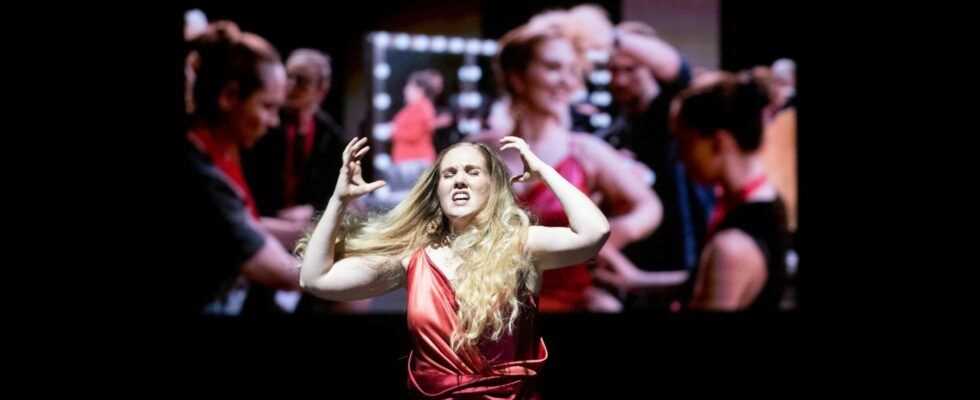Culture is back – and in the end the obligatory “standing ovations” were a must. The Salzburg audience cheered on Friday evening to kick off the Whitsun Festival with an extremely appealing production of the Handel oratorio “Il trionfo del Tempo e del Disinganno”. Musically there was light and shadow, but the overall package was convincing.
You have to trust yourself first. Just as the protagonists in Handel’s “Il trionfo del Tempo e del Disinganno” keep the mirror in front of their eyes at the start of the Salzburg Whitsun Festival, director Robert Carsen does the same with the “rich and beautiful” among the festival guests. He starts the story of beauty, youth and transience, truth and deception with a competition of vanities, a parody in the style of “Germany’s Next Top Model”. By the way, in the second act it gets even better. When the curtain is opened, the audience is actually looking into a huge mirror. The metaphorical has become a real element of introspection. An extra praise to the entire stage, costume and lighting team (Gideon Davey, Robert Carsen, Peter Van Praet).
The contemporary approach of an excursion into the world of models, agencies and parties fits perfectly with the thematic obsession with beauty. In addition, there is a clever use of digital or cinematic elements on stage right from the start. They reinforce the impressions without gaining the upper hand uncomfortably. Only one question remains unanswered until the end (and depends entirely on the personal taste of each visitor): Is such a modern view of the material really compatible with the sounds of a baroque orchestra?
Baroque music is such a thing anyway and is controversial even among experts. Just as horse-drawn carriages have evolved into cars, so has music evolved over the centuries. Experience has shown that a baroque orchestra with a naturally thinner cast, such as the “Les Musiciens du Prince-Monaco” at the Whitsun Festival under the direction of Gianluca Capuano, finds it much more difficult to carry a scenic production over an entire evening than with a large symphony orchestra and a classical one Opera would be the case. Especially since one would have wished for a little more dynamism from the orchestra pit a few times on the evening of the premiere.
And finally, light and shadow alternated a few times in the vocal performances at the beginning of the festival. While the male protagonists Lawrence Zazzo (Disinganno) and Charles Workman (Tempo) continuously acted at the highest level, the two women gave a lot of room for improvement in the first act. The initially very cautious soprano Mélissa Petit (Bellezza) looked as if she had received a booth sermon during the short break between the first and second part, like at a soccer match: “Hello, this is the festival. Show what you can! ”And she did that too.
Likewise Cecilia Bartoli (Piacere), who also only thawed properly with the continuation of the piece, but then set a highlight with the aria “Lascia la spina, cogli la rosa”. Just like full professionals do. Countertenor Lawrence Zazzo had previously provided the first highlight of the evening. His deeply felt, touching interpretation of “Crede l’uom ch’egli riposi” earned spontaneous and well-deserved applause from the scene.
Conclusion: The balance and the overall package of the performance were convincing. The longer the Handel oratorio lasted, the more the sensitively coordinated staging withdrew, while conversely the singers increasingly blossomed. A worthy start to the Salzburg Whitsun Festival.
